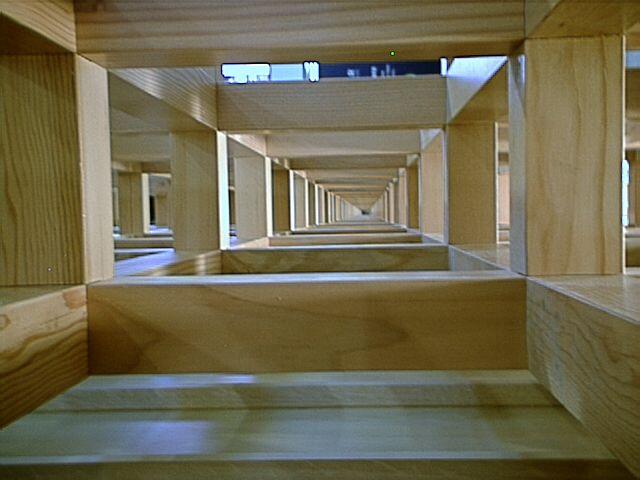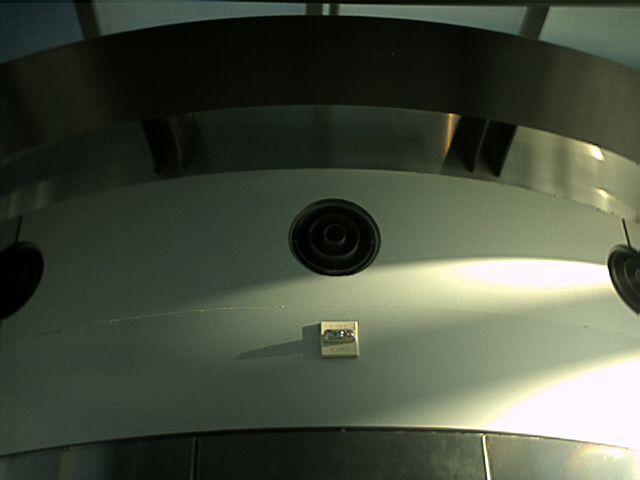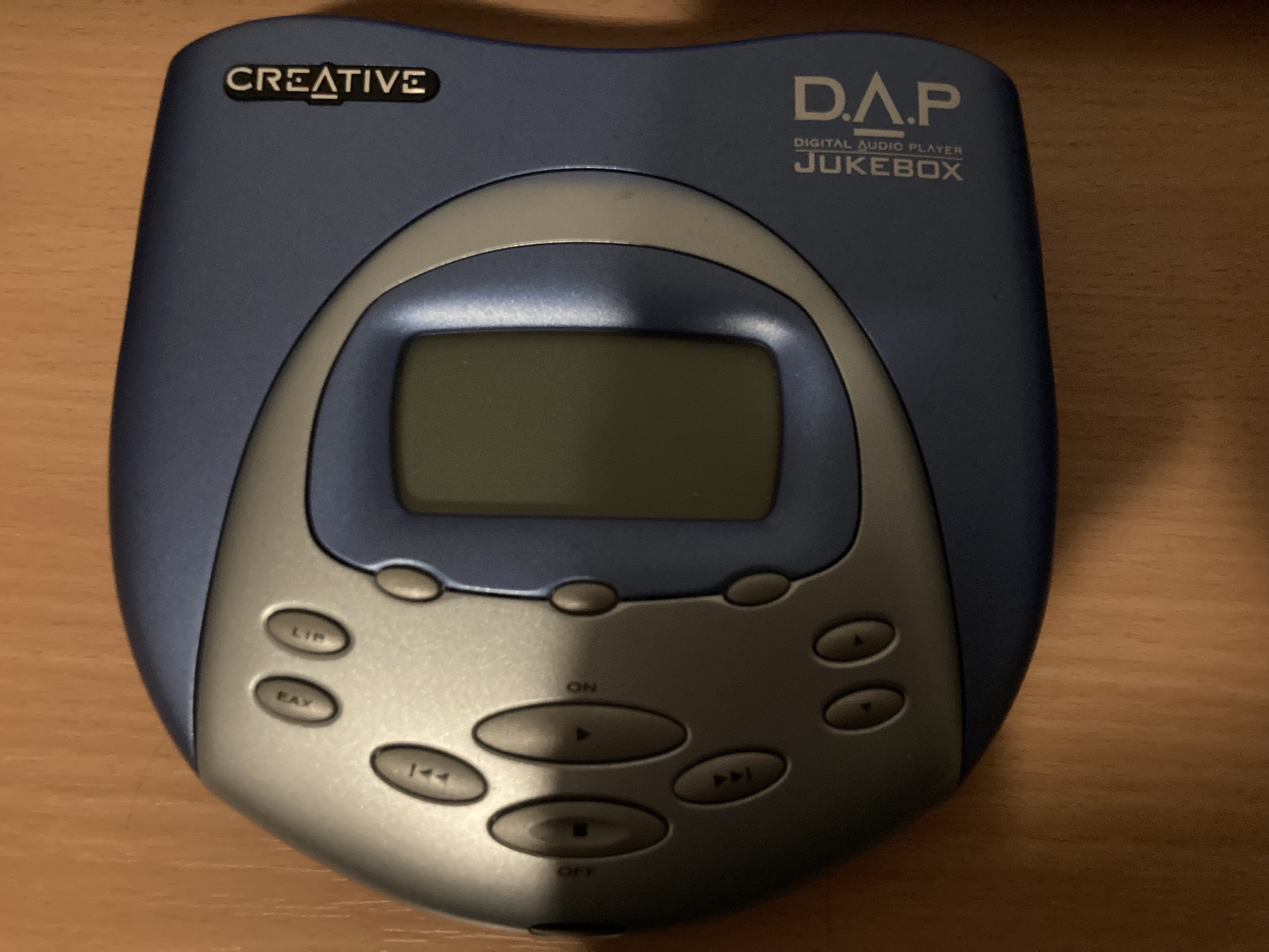2024-12-04 ** project update: composite video output
The permacomputer project is anxious to build a machine that is able to be immediately comprehended by those uninitiated to electronic computation. Outside the context of mass industrial society, after, say, a massive ecological and societal collapse, electronic computers may become an arcane and forgotten knowledge.
The meanings embedded within the human practice of using computers is arguably more important than the computers themselves. What good are computers if society does not consider them a virtue? To this end, the permacomputer project asserts that it is possible to build a computer that will not only be durable and long-lasting, but also personally engaging and culturally enriching.
The concept of the "human-computer interface" encompasses this criteria. In the context of the people's permacomputer, we are merely discussing the computer's video output.
The first phase of the project found that it was desirable to include some form of visual output in the permacomputer. It was decided not to include any display into the design of the permacomputer itself, and instead require the user to provide their own television. Reasons for reaching this decision are that (a) it is expected that televisions will be possible to salvage in a hypothetical societal collapse; (b) given that the video standard chosen by the project is analogue composite video, this simple form of signal should have some hope of being able to reverse engineered should cultural knowledge around computing significantly degenerate.
The second phase builds on the results of the first. The work done in the second phase concluded that it was prohibitively expensive and cognitively overwhelming to expect the visual display capabilities of the permacomputer to conform to video designs contemporary with the 1970s and 1980s.
The project found a solution to composite video output in small
microcontrollers. The idea is not to directly integrate video into the 8 bit computer design, but use a cheap microcontroller as a video terminal, and have the computer use its ACIA chip to communicate with it via serial.
Using microcontrollers does not contradict the spirit of
permacomputing. It radically reduces the chip count of the design, allowing the project to proceed faster towards a
proof-of-concept. Using microcontrollers removes the need to sacrifice system memory for VRAM. it also makes the permacomputer modular--if one part of the system fails, you can still use the other half.
% Previous Microcontroller Video Terminal Projects
# the 'geoff graham'
## hardware
MCU: PIC32MX250F128B
Resolution: 18 lines x 48 characters
MCU Price:
- ebay: prohibitive
- aliexpress: AUD8.25
## references
https://geoffg.net/terminal.html
http://retro.hansotten.nl/other-retro-articles/ascii-video-terminal/
https://hackaday.io/project/173216-ascii-video-terminal
https://www.pcbway.com/project/shareproject/ASCII_Video_Terminal_2.html
https://github.com/dhansel/TerminalUSB
# the 'tellymate'
## hardware
MCU: ATMega8
Resolution: 25 lines x 38 characters
MCU Price: AUD3.51
## references
http://www.batsocks.co.uk/products/Other/TellyMate%20Tiny.htm
# the 'videoblaster'
## hardware
MCU: Atmega 1284P
Resolution: 25 lines x 40 chars
MCU Price: AUD2.85
## references
https://www.hackster.io/janost/avr-videoblaster-8026fd
# the 'octapentaveega'
## hardware
MCU: Attiny85
Resolution: 16 lines x 32 chars
MCU Price: AUD4.91
## references
https://github.com/rakettitiede/octapentaveega
# the 'simple video adaptor'
## hardware
MCU: Mega8, Mega16, Mega32, Mega8535, etc.
Resolution: 20 lines x 38 chars
MCU Price: see below ATMega 8
## references
https://www.serasidis.gr/circuits/AVR_VGA/avr_vga.htm
# the 'small tv terminal'
## hardware
MCU: ATMega8
Resolution: 25 lines x 40 chars
MCU Price: AUD3.51
## references
https://www.serasidis.gr/circuits/TV_terminal/Small_TV_terminal.htm
# the 'circuit cellar'
## hardware
MCU: TM4C1233H6PM
Resolution: 20 lines x 75 chars
MCU Price: prohibitive
## references
https://circuitcellar.com/research-design-hub/build-a-composite-video-text-terminal/
# the 'grant searle'
## hardware
MCU: ATmega88 + ATmega328
Resolution: 25 lines x 80 chars
MCU Price: AUD1.53 + AUD2.63
## references
https://web.archive.org/web/20190907195213/http://searle.hostei.com/grant/MonitorKeyboard/index.html
part of me is like "what if i make my VM run on DOS for #dosember" but also im not sure that'd be all that cool since it's just 32-bit C that i could compile with djgpp and also it's not really *doing* anything yet >_>
COBOL allows hyphens as well as underscores in names, it is automatically better than basically all C-family languages. I don't make the rules
Some photos I took today for the #ShittyCameraChallenge with my Agfa CL18. No illusions about these being in the same league as some of the photos y'all take, but I had fun!



What's the right coding soundtrack for working on my little BASIC interpreter? I'm moving it over to Scheme now it sorta works in the Pythonic test.
Previously: https://mdhughes.tech/2017/06/25/coding-soundtracks/
But I've added a lot since.
(intent: copy-paste a list of tracks.
actual: fuck around in bbedit, then Numbers, export back, fucking wordpress doesn't let me upload tsv so gotta zip…)
https://mdhughes.tech/wp-content/uploads/2024/12/coding-soundtracks2.tsv.zip
#music
so hey
I set up a new single-user instance for myself
running akkoma
if you get a follow request from https://fedi.reclaim.technology/users/djsundog then yeah, that's me, saying fuck mastodon.
Omg @spritely is almost over 10k on its first day of fundraising ;_;
Who's gonna push us over?!?! https://spritely.institute/donate/

#lispyGopherClimate With #guests?! If everythink works. https://archives.anonradio.net/202412040000_screwtape.mp3 #archived wonderful show everyone!
#climate #haiku by @kentpitman
Hopefully @sacha will tell us about the #emacs #emacsconf this weekend!
+ #webcomic #author, @shizamura https://sarilho.net/en/ ? emacs-people = alien-robot-people?
Also #lisp emacs, I want to talk about porting #ZWEI like Kent did ^ https://tumbleweed.nu/r/sys/dir?ci=tip @amszmidt
#lambdaMOO too!
just draw cat

i'd like to draw attention to this lil indie gameboy game by @objetdiscret https://objetdiscret.itch.io/tai-fab-museum it's a collection of nonogram (picross) puzzles framed within a breezy surreal adventure game. it's polished and quite substantial (~200 puzzles) and plays great on real hardware. highly recommended!
@vidak The reason I ask is that the existing software is not targeted solely at a processor, but at a whole platform: not just a 68000, but an Amiga, or a Mac, with all the other custom chips, ROMs, memory maps, etc. that underlie the platform. I've tried to build a 6502-based computer, at first with just serial I/O, then hopefully displaying something using a 32x8 LED matrix, sort of in the CollapseOS.org cobbling tradition; that project has not finished, and that could be because I set out on my own, and tried to skip the part with a bunch of LEDs, switches and breadboards, that would make it possible to debug one piece or another of the system. The journey of https://www.youtube.com/@akohlbecker toward a 65816 computer, https://github.com/adrienkohlbecker/65C816, has been quite enlightening, firmly 16-bit, and not aimed at running preexisting software. What it hasn't been is short. :)
hey, it's giving tuesday! did you know that I work for a nonprofit? I work for @spritely which is a wonderful nonprofit that is building technology for secure peer-to-peer collaboration and healthy online communities! if you're into activitypub, the protocol that powers the fediverse, you'll definitely be into what we're cooking up to be the next generation of decentralized social media (and much more)
this is our very first supporter drive and it would be *so cool* if you supported our work with a donation!
@jaredj probably a bit of both! what would you recommend?
Made a little Fractran ruleset compiler, still working on making the output nicer, but compiling rewriting to stack languages is a piece of cake.
https://paste.sr.ht/~rabbits/c75030488a264dd9aa7d030030047e928c24418a
"year in review"
@jaredj @vidak after a few initial hiccups due to user error (and a lingering issue that stops some people from following me that I don't have the technical skill or mental bandwidth to figure out), I'm mostly happily settled into my self-hosted #GoToSocial instance. I'm enjoying scanning the #emacs hashtag weekly with my mastoden.el code for combining the timelines from multiple servers, I'm slowly building the habit of posting little status updates and thoughts, and I like the glimpses I get into other people's thoughts. My limitations at this point are more non-technical than technical. :) There's probably a better thing out there, but that's okay, there's still enough for me to learn from and figure out even with what I've got.
This time, I bought a dead nugg! My strong suspicion is the BIOS chip in this one has gone faulty. Luckily, one person still sells replacement flash chips. It will be a fun (and tough) soldering exercise.

"year in review"
you know, i feel like i've got enough wisdom to keep quiet when i really want to say 'i told you so'
we owe it to ourselves to ditch using mastodon as a project. honestly the fediverse ended up following the pareto principle because of mastodon. and then mastodon itself within mastodon dot social.
where is the federated, horizontal system we were promised? how is it acceptable to have one instance to rule them all?
very little of mastodon as a piece of software is praiseworthy, with its complete lack of modularity, and its wasteful use of people's computing resources.
the man himself refuses to listen to the community, and runs the show as if he is inseperable from the project.
